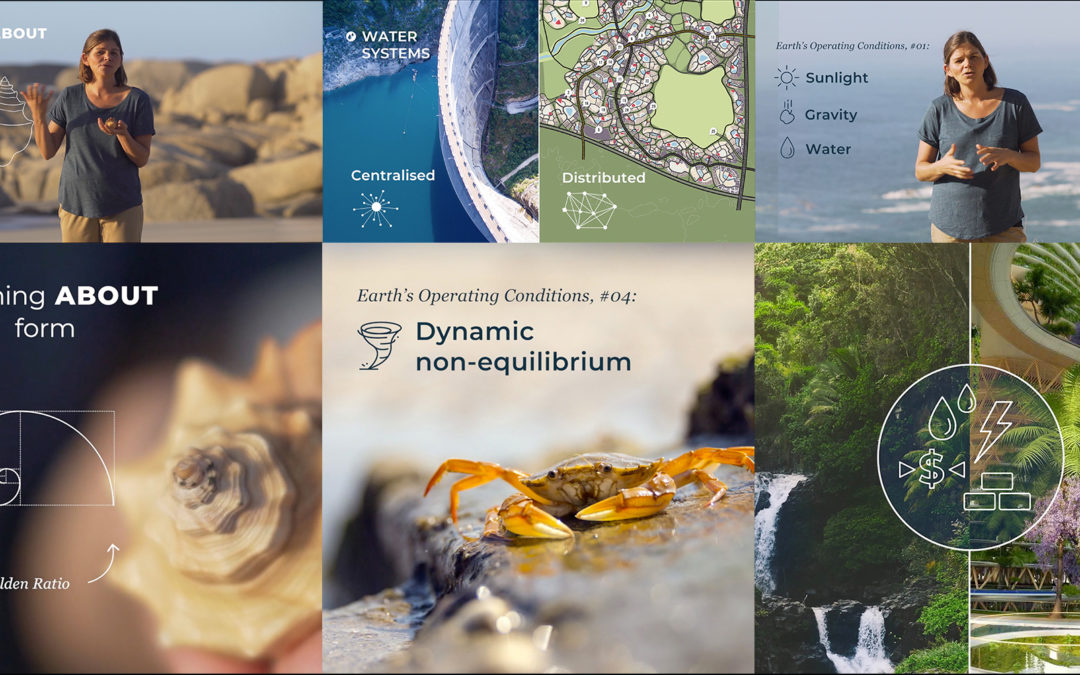So here we are. The year 2020, in the grips of a global viral pandemic. Humans, the “mighty species”, once again brought to our knees by an almost-invisible, barely-living piece of rogue DNA. Only this time, we managed to facilitate this virus’ Machiavellian quest for global domination in record-breaking time, and in doing so, unwittingly brought almost all of our business-as-we-know-it to a grinding halt. Now that our influential role in its spread has become apparent, all we can do is lay low, wash our hands a lot, and wait it out. And ask questions.
A wonderful metaphor has arisen on social media recently that seems comforting during this strange time. It is the idea that we’ve been forced to go into a kind of metamorphosis: hunkering down in isolation, breaking down the form that once was, and re-emerging as a beautiful new creature, ready for the next phase of life and a new role in the ecosystem.
What if we take this moment in time to imagine how we could redesign – or metamorphose – our world? Could we use this as a global opportunity to reevaluate our priorities and our possibilities? What if we weren’t complacent in our return to “normal”? Instead of hastily reassembling the old building blocks, we instead set about rebuilding our world based on nature’s principles that have stood the test of time and continue to thrive on this planet.
This is our vision for biomimicry: changing the way that we design our world so that our cities, homes, products, and organizations can be more resilient and regenerative.
What if we could emulate nature’s thriving ecosystems that continue to grow and develop while building the overall health of the system? From the fundamentals of growing soil, cleaning the air, and purifying water, to creating the more complex concepts of generating value and wealth from renewable resources that are abundant, because they are cycled continuously – our new normal could be one where every diverse organism plays a part (there is no unemployment), and value is exchanged in local, diverse communities that scale through networks and distributed systems. Nature’s ecosystems have evolved complex processes for adapting and being resilient to disease, disruption, and dynamic contexts. It is not the strongest that survive, but rather those who can adapt to changing conditions.
The deep principles we find in nature are the blueprint for designing our built environment and the systems that we live and work by – to thrive on this planet and to contribute to the overall health of the systems and the planet. The shapes, structures, recipes, processes, and systems of nature – combined together – can be reverse engineered within this overall big-picture systems redesign; and from the part to the whole, our world can be designed for all to thrive – not just humans, but all species.
We are at a very strange moment in time – one where we are suddenly physically disconnected, but also incredibly digitally connected. And one way to start shifting your way of thinking is to spend some of this time taking online courses. While you’re trapped indoors, at least you can still connect to nature, and at the same time begin to #thinkoutside.
‘Learn Biomimicry’ is a new, online course platform created by BiomimicrySA and ReWild Africa, in partnership with the Biomimicry Institute. Biomimicry invites us to reconnect to the genius and wisdom of nature, to emulate nature’s forms, processes and systems to design a world that is well adapted to this planet and nourishes life. The contents of this biomimicry course will equip you with the big picture understanding, the practical skill-set, and a new way of thinking to solve the core challenges of our time, mentored by nature’s billions of years of experience.
When we first built the course content for Learn Biomimicry, it was designed to assist the staff of a large heavy-industry company to radically transform their approach to innovation and how they could do business in a more life-friendly way in the future. Therefore, our educational goal was that it should start at a level where it would be accessible to those who had never even heard of biomimicry before and should then continue to scaffold their learning until they were able to consider redesigning entire systems. We have carried this same framework over into the version that you see online now.
We’re living in a time where people are seeking answers to complex global challenges, and we truly believe that those answers are, literally, right outside. Our aim is to equip people with the skills to be able to harness the potential that surrounds them every day and to make better design decisions – whether they are designing a product, a business, or a city.
It is very important to us that the courses always remain globally accessible, as biomimicry is a practice that can only flourish through connection and a shared language. We have selected case studies from all kinds of fields, to showcase the tangible benefits of biomimicry through its application in “the real world”, more than focusing on the deep theory.
We often get the question: “do I need to know biology to learn about biomimicry?” The answer is no. Biomimicry is more than just pure emulation. It is a way of thinking – it is a mindset AND a methodology. This means that even if you’re not working on something that has a literal biological analogy, you can still apply the principles found in nature to your life and work.
By participating in our courses, you will gain a deeper understanding of how to apply biomimicry to your life and work. You’ll practice critical thinking skills, and you’ll learn how to use the tools and practical step-by-step methodologies for approaching sustainable design and innovation. At the end of the course, you will receive a personalized certificate of completion from BiomimicrySA and the Biomimicry Institute. And, of course, you’ll gain a much deeper appreciation for nature!
We want our Learn Biomimicry community members to feel inspired, confident, and motivated so they are able to start integrating biomimicry into their lives – whatever their work is and wherever they may be. We hope you walk away empowered and ready to help us redesign a new normal that creates conditions conducive to life – just like nature does.
 Jessica Berliner
Jessica Berliner
BTech Communication Design, B.Practitioner (BiomimicrySA), Managing Director of ‘Learn Biomimicry’
An unwavering passion for nature slowly steered Jess’ career from graphic design to specializing in biomimicry education (and, subsequently, the business management thereof). She has worked closely with BiomimicrySA for around 10 years to build the biomimicry community in South Africa, and frequently gives talks and runs workshops on biomimicry in Cape Town, SA. Jess is passionate about improving the way that we design our products and systems, and believes that biomimicry provides both the vision and the means to do so.

